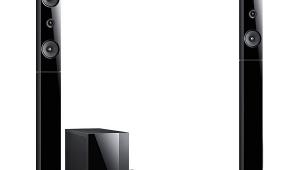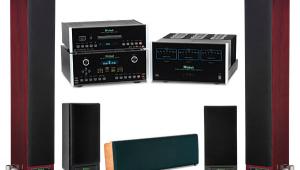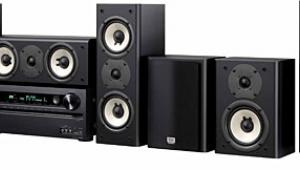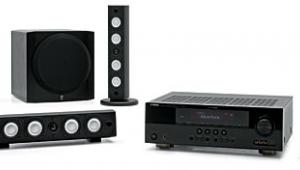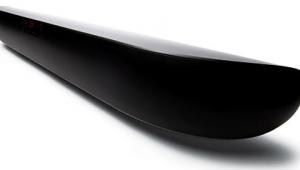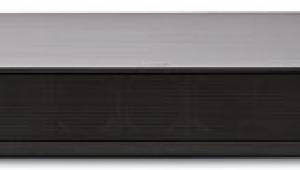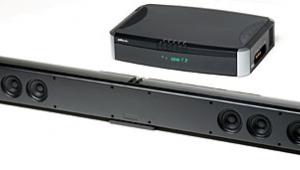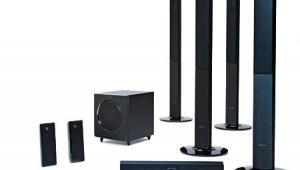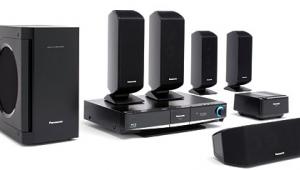Polk Audio DS7200 HTIB
I can still remember the first time I heard the phrase "high-end home-theater-in-a-box" uttered in public and the reaction it brought at a press conference. Half of the crowd simply laughed off the idea, and the other half began muttering about the demise of civilization, openly pondering the oxymoronic nature of what they had just heard. Admittedly, I counted myself in the former group. While I didn't take the announcement as confirmation that the apocalypse was upon us, I did chuckle, make a few sarcastic remarks to those around me, and begin setting an over/under in my mind for how long it would take for this piece of marketing magic to expire. After all, who was going to pay thousands of dollars for a system that came in a single package?
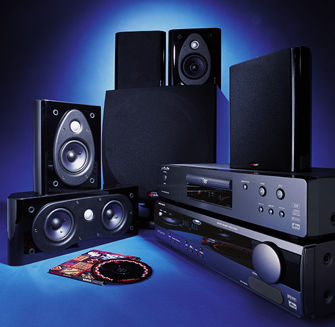
That was then; this is now. The theater-in-a-box segment has exploded, and it's not hard to figure out why. While there will always be tweaker and audiophile segments, the simple reality is that most people just want their home theater system to be simple, convenient, and unobtrusive—even if that means compromising other system criteria. Rather than trickling down, as most electronics concepts do, this one seemed to trickle up. The popularity of HTIBs, most of which initially were (and still are) rather cheap, has more and more manufacturers thinking about the possibility of incorporating the HTIB's ease-of-everything benefits but minimizing performance compromises by using higher-quality components in a more-expensive package.
Polk Audio's RMDS-1 was one of the first all-inclusive systems I heard that got me thinking that completely dismissing the HTIB genre might be a mistake. Thus, when word came that Polk was launching a successor to this highly regarded system, curiosity got the best of me—and here we are. The new standard-bearer for Polk's HTIB line is the Digital Solution 7200 ($2,299), a system that adds DTS processing, 5.1-channel inputs, and a few other perks but costs $400 less than its predecessor and claims to outperform it. Polk is quick to point out that you can add the optional DP-1 DVD player and DR-3 universal remote for $299 (when purchased with the DS7200) and still have $100 left over, compared with the price of the RMDS-1. I did add both products to my review system.
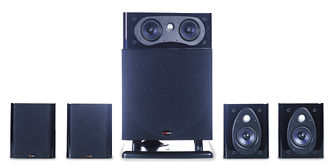
The base DS7200 package consists of a preamp/processor/tuner (which is about the size of a standard pre/pro), four identical satellite speakers, a dedicated horizontally aligned center channel, and a subwoofer unit that also houses all six channels of amplification (FTC-rated at 360 watts of continuous average power into 4 ohms—or about 60 watts per channel). The pre/pro's rear panel offers two coaxial and one optical digital input, which is obviously lean. Remember, though, that this system isn't targeted at people who have 10 different components that need to be accommodated. There's also six analog inputs and two outputs, five video inputs (with composite and S-video), 5.1-channel analog inputs (critical for use with SACD and DVD-Audio players), and a second-zone analog output. Interestingly, the pre/pro offers bass management in the analog domain—a rare feature—so even those of you who have SACD and DVD-Audio players that lack bass management are covered.
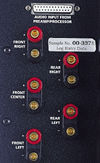 Polk clearly took a complete-system approach to designing the DS7200. Everything from the amplification to the filters to the unique output configuration has been designed specifically for this system's components. This obviously eliminates the ability to mix and match pre/pro, amp, and speaker elements. Of course, if you want to mix and match, why are you looking at HTIBs? In return, you get a tremendously cohesive system that avoids many of the pitfalls of poorly matched systems, especially sub/sat-and-receiver combos. For example, the DS7200 addresses the black hole that's found in the lower-midrange/upper-bass region of most sub/sat systems by using specially designed active filters, rather than the more-common (and less-expensive) passive variety. This allows for greater flexibility and precision in maximizing the satellites' contribution from 80 to 200 hertz, and it helps the transition from sat to sub sound far more natural. The DS7200 also uses a special output configuration for all formats that's designed specifically for its amp and speakers. This configuration eliminates a lot of setup hassles and the potential for incorrect adjustments—a smart move for an HTIB system.
Polk clearly took a complete-system approach to designing the DS7200. Everything from the amplification to the filters to the unique output configuration has been designed specifically for this system's components. This obviously eliminates the ability to mix and match pre/pro, amp, and speaker elements. Of course, if you want to mix and match, why are you looking at HTIBs? In return, you get a tremendously cohesive system that avoids many of the pitfalls of poorly matched systems, especially sub/sat-and-receiver combos. For example, the DS7200 addresses the black hole that's found in the lower-midrange/upper-bass region of most sub/sat systems by using specially designed active filters, rather than the more-common (and less-expensive) passive variety. This allows for greater flexibility and precision in maximizing the satellites' contribution from 80 to 200 hertz, and it helps the transition from sat to sub sound far more natural. The DS7200 also uses a special output configuration for all formats that's designed specifically for its amp and speakers. This configuration eliminates a lot of setup hassles and the potential for incorrect adjustments—a smart move for an HTIB system.
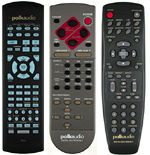 It shouldn't take you any longer to set up the DS7200 than the time it takes to wire up five speakers because that's about all you have to do. The connection from the pre/pro to the amp (i.e., the back of the sub) is a single DB-25 cable—which Polk supplies, along with speaker wire and everything else you'll need. Then, run five wires from the binding posts on the back of the sub to the speakers, do a few quick tweaks on the user-friendly onscreen menu, and you're off. The manual is comprehensive and well done, but you probably won't need it. Obviously, if you add the DP-1 or any other DVD player, a couple of extra connections are in order, but that should add all of a minute to your setup time. I should note that, while the pre/pro doesn't have component video switching, the DP-1 does have a component output that you can run straight to your TV.
It shouldn't take you any longer to set up the DS7200 than the time it takes to wire up five speakers because that's about all you have to do. The connection from the pre/pro to the amp (i.e., the back of the sub) is a single DB-25 cable—which Polk supplies, along with speaker wire and everything else you'll need. Then, run five wires from the binding posts on the back of the sub to the speakers, do a few quick tweaks on the user-friendly onscreen menu, and you're off. The manual is comprehensive and well done, but you probably won't need it. Obviously, if you add the DP-1 or any other DVD player, a couple of extra connections are in order, but that should add all of a minute to your setup time. I should note that, while the pre/pro doesn't have component video switching, the DP-1 does have a component output that you can run straight to your TV.
